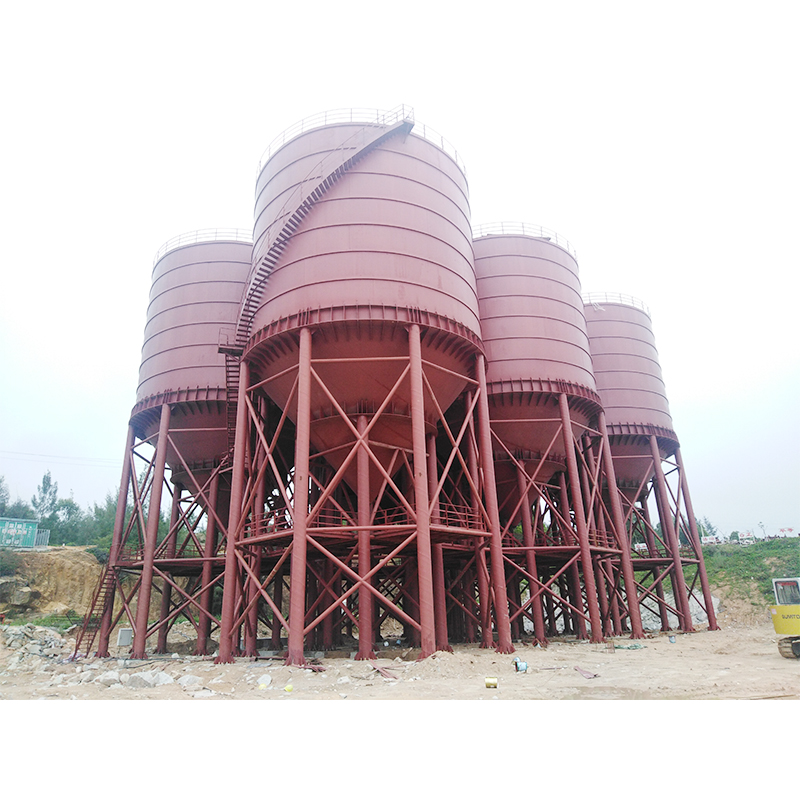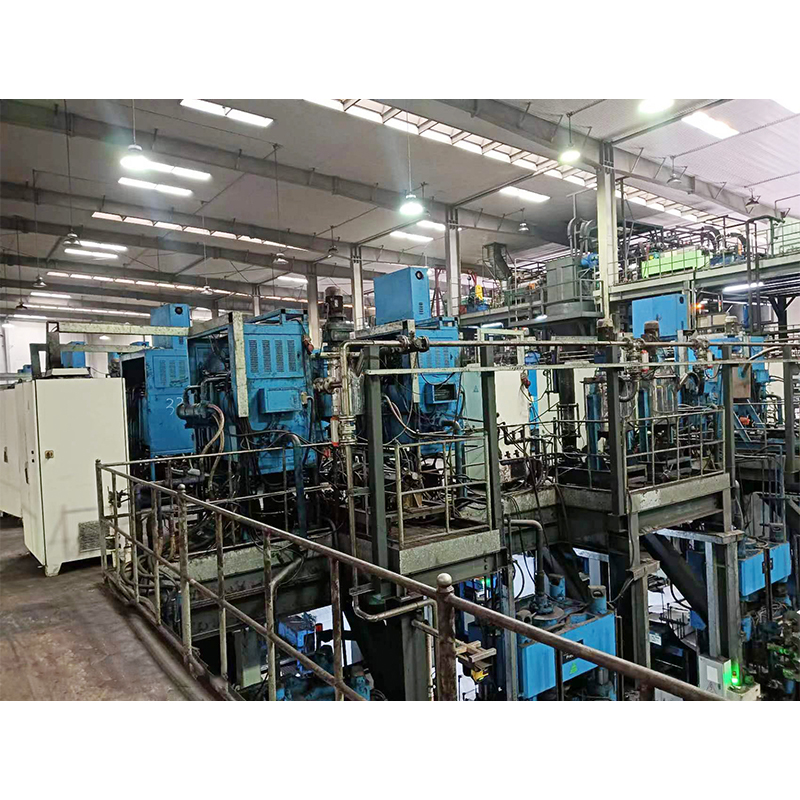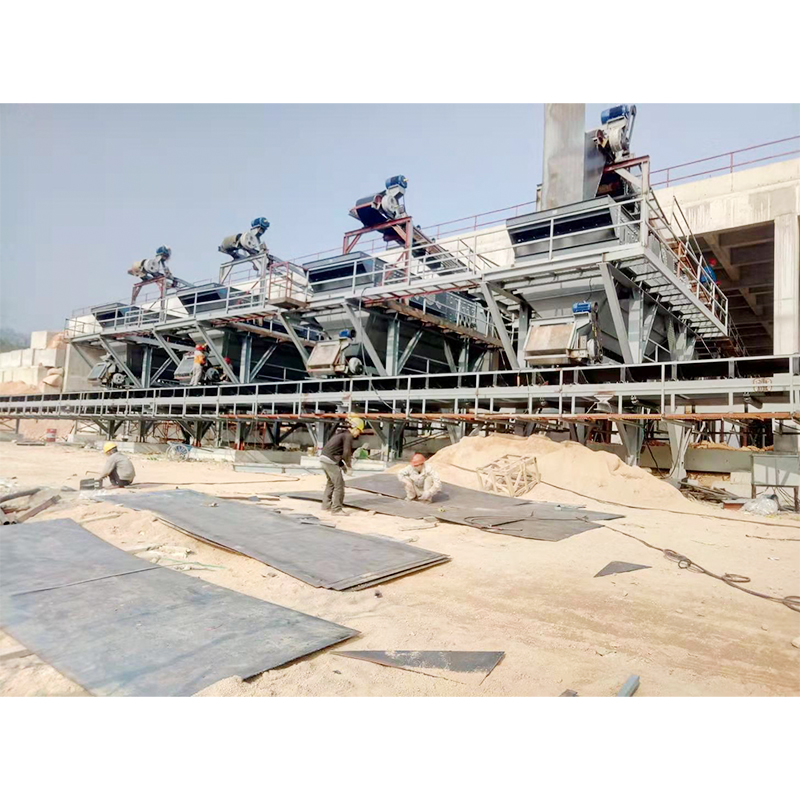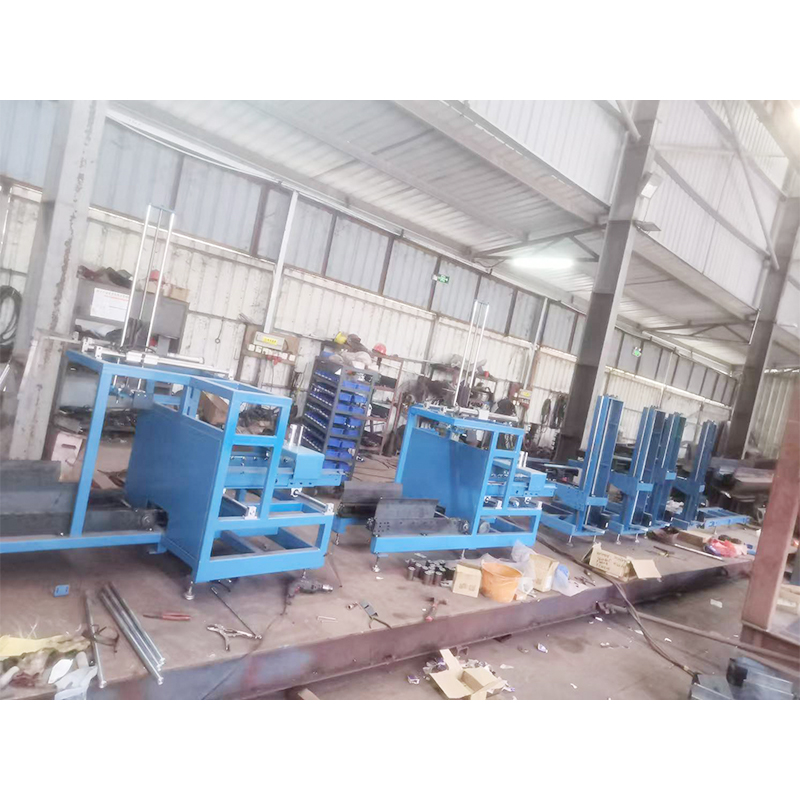When an automatic slurry weighing and conveying system encounters slurry density fluctuations, how can it automatically adjust parameters to maintain stable conveying?
Release Time : 2025-09-09
When the automatic slurry weighing and conveying system encounters slurry density fluctuations, it maintains stable delivery through a closed-loop mechanism of "real-time monitoring, intelligent analysis, and coordinated parameter adjustment." This core principle relies on the coordinated efforts of multiple built-in modules to convert density fluctuations into controllable conveying parameters, preventing flow deviations, pipeline blockages, and inaccurate metering caused by density anomalies. The automatic slurry weighing and conveying system first uses the density monitoring module to capture subtle changes in slurry density in real time. This module typically consists of high-precision density sensors installed at key points in the conveying pipeline or in the buffer zone after slurry mixing. These sensors continuously collect slurry density data and transmit it in real time to the system's central control unit, providing a precise basis for subsequent adjustments. This ensures that every density fluctuation is promptly detected, preventing untimely adjustments due to monitoring lags.
The central control unit is the "decision-making core" for parameter adjustments. It rapidly compares real-time density data with a preset standard density range to determine the direction and magnitude of fluctuations—for example, whether the density is too high (thickening the slurry) or too low (thinning the slurry)—and whether the fluctuation exceeds the threshold within which the system can automatically adjust. If the fluctuation is within a controllable range, the control unit immediately invokes a pre-set parameter adjustment algorithm, combining current conveying conditions (such as flow rate, pressure, and weighing data) to calculate the specific parameters that require adjustment. If the fluctuation exceeds the automatic adjustment range, the system triggers a warning signal and simultaneously activates basic protection parameters to prevent damage to the automatic slurry weighing and conveying system due to overload or abnormal operation, buying time for manual intervention. This ensures both timely adjustments and system safety.
The system adjusts conveying parameters accordingly for density fluctuations in different directions. When slurry density is too high (thickening), its fluidity decreases, and conveying resistance increases. In this situation, the automatic slurry weighing and conveying system prioritizes adjusting the conveying pump's operating parameters—for example, by appropriately increasing the pump's output pressure or adjusting the pump's speed to enhance pumping power and ensure smooth slurry flow through the pipeline, avoiding flow reduction or pipeline blockage caused by excessive resistance. Furthermore, if the system is equipped with a slurry agitation module, the agitation frequency is appropriately increased to prevent particle settling caused by high slurry density, further maintaining slurry uniformity and minimizing the impact of density fluctuations on conveying, ensuring that the slurry maintains a relatively stable physical state throughout the conveying process.
When slurry density is too low (thinning), the slurry's weight per unit volume decreases, potentially causing the weight data collected by the weighing module to mismatch the actual conveyed volume, affecting measurement accuracy. At this point, the system prioritizes linking the weighing module with the conveying speed. By slightly adjusting the pump speed, the conveying flow rate is altered to maintain the slurry weight delivered per unit time within a preset range. For example, the conveying speed can be appropriately increased to compensate for insufficient weight per unit volume due to reduced density, ensuring that weighing data consistently meets production requirements. Simultaneously, the control unit adjusts the pressure parameters within the pipeline to prevent excessively thin slurry from causing low pressure and unstable flow. This ensures that pressure and flow are consistently coordinated during the conveying process, preventing interruptions or sudden changes in flow.
Linking the weighing module with conveying parameters is crucial for maintaining stability, as density fluctuations directly affect the "volume-to-weight" conversion relationship. Simply adjusting the flow rate can lead to weighing measurement errors. The system correlates the weight data collected in real time by the weighing module with density data. For example, as density increases, the weight of the same volume of slurry increases. In this case, the system appropriately reduces the conveying speed to prevent the weight conveyed per unit time from exceeding the preset value. As density decreases, the system increases the conveying speed to compensate for the weight difference. This ensures that each weighing result accurately corresponds to the actual conveying volume. This ensures that material ratios in production are not affected and prevents material waste or production quality issues caused by metering errors.
Auxiliary adjustments to the pipeline system are also coordinated with core parameter optimization to further ensure stable conveying. If high mud density increases flow resistance within the pipeline, the system may activate the pipeline's auxiliary pressure booster or adjust the opening of pipeline valves to reduce local resistance and ensure smooth mud flow. If the mud density is low and contains a high amount of water, the system will check the pipeline's tightness to prevent leakage due to excessive mud thinning. Simultaneously, the pipeline temperature control module (if equipped) maintains a stable mud temperature to prevent temperature fluctuations from exacerbating density fluctuations. This creates a dual protection mechanism of "parameter adjustment and pipeline protection," allowing every link in the transportation chain to adapt to the changing mud characteristics.
In addition, the system features adaptive learning capabilities, recording optimal adjustment parameters under different fluctuation scenarios over the course of multiple density fluctuations, creating a unique parameter database. When similar density fluctuations occur again in the future, the control unit can directly call the mature solutions in the database, shorten the adjustment response time, and make parameter adjustments more accurate and efficient; at the same time, the system will regularly conduct feedback analysis on the adjustment effects and optimize the algorithm logic. For example, if a certain type of density fluctuation occurs frequently, the system will automatically refine the parameter adjustment gradient under this scenario, further improving the transportation stability, allowing the system to continuously improve the adjustment mechanism during long-term operation and adapt to changes in mud density under different working conditions.







